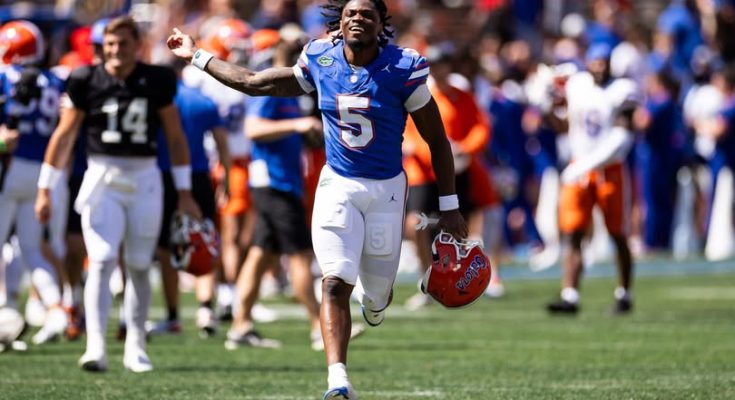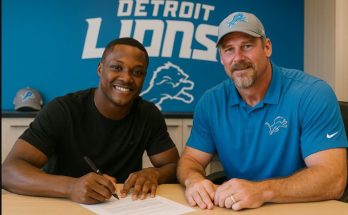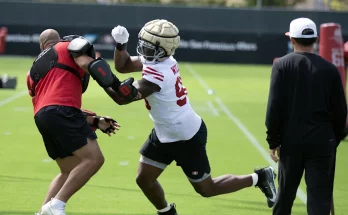The Florida Gators have been no strangers to adversity over the years, but the latest development on the injury front feels like yet another gut punch to a team hoping to make a strong push this season. When injuries pile up early in the year, it’s more than just an unfortunate circumstance—it’s a challenge that can ripple through every aspect of the program. This most recent setback once again forces the coaching staff to re-evaluate not only their depth chart but also their overall game plan as they navigate an increasingly competitive conference. For Florida, this is as much a mental test as it is a physical one, and the team’s ability to respond could determine the trajectory of their season.
The Gators entered the offseason with optimism and a sense of renewed purpose. After a mixed bag of results in recent years, the program sought stability and improvement, with key recruits and returning veterans expected to anchor the roster. But in football, no amount of preparation can fully guard against the unpredictable nature of injuries. The Gators had already endured a few notable absences from training camp and early practices, each chipping away at the roster’s stability. Now, with another significant injury to a key player, Florida finds itself in a familiar and frustrating position—scrambling to adjust on the fly. This new blow not only impacts the immediate game plan but also has long-term implications for how the team handles rotations, matchups, and overall strategy moving forward.
One of the hardest parts about injuries at this point in the season is the timing. With the opener looming and conference play not far behind, every practice rep matters. Every player on the field is absorbing crucial reps to fine-tune schemes and develop chemistry with teammates. When a starter or key contributor goes down, it isn’t just their production that’s lost—it’s the ripple effect throughout the team. The replacement player, while perhaps talented, may not have the same experience or command of the playbook. Other players may have to shift positions or take on additional responsibilities. This disruption can lead to a domino effect, where a single injury forces a series of adjustments that subtly alter the team’s identity on the field. For the Gators, who are trying to establish consistency in all three phases of the game, such interruptions are far from ideal.
The mental toll of repeated injuries also cannot be overstated. Players feed off each other’s energy and presence, and losing a teammate—especially a leader—can create an emotional void. This is where the role of the coaching staff becomes vital. It’s not just about plugging in the next player on the depth chart; it’s about maintaining morale, focus, and belief in the system. Florida’s coaches will now be tested in how they rally their players, reminding them that adversity is a part of the sport and that successful teams find ways to rise above it. The Gators’ leadership core in the locker room will also be called upon to set the tone. Veterans who have been through the highs and lows before will need to keep younger players locked in, ensuring that the next man up mentality is more than just a cliché.
For fans, injuries often stir up a blend of frustration and anxiety. Supporters spend the offseason envisioning best-case scenarios, mapping out potential win totals and imagining big moments against rivals. An injury, especially to a high-impact player, can feel like those dreams are suddenly under threat. However, seasoned fans also know that football seasons are marathons, not sprints. Depth, development, and adaptability often separate the contenders from the rest. While it’s easy to dwell on what’s lost, the history of the sport is filled with examples of unexpected heroes stepping up when given an opportunity. Florida’s fan base will be hoping that this latest setback opens the door for just such a story.
The competitive landscape of the SEC adds another layer of urgency to the situation. In a conference where the margin for error is razor-thin, losing a playmaker can tilt the balance in close games. Every week, Florida will be facing opponents stacked with NFL-caliber talent, and small disadvantages can be exploited quickly. This is why depth building is such a critical part of roster management for SEC programs. The Gators have been recruiting with that in mind, but injuries still test whether those recruiting wins translate into game-ready replacements. For the next few weeks, Florida’s practices will likely focus on getting the replacements up to speed, refining execution, and perhaps tweaking certain schemes to better suit the personnel now available.
From a tactical perspective, coaches often face a choice in these situations: stick with the system and trust the backups to execute, or adjust the game plan to cater to the strengths of the players now in the lineup. Both approaches have their pros and cons. Sticking with the system reinforces continuity and preparation for the long haul, but it can also put inexperienced players in situations where they’re less comfortable. Adjusting the game plan can yield short-term gains but may disrupt rhythm and cohesion. The Gators’ staff will have to find the balance between staying true to their identity and adapting to current realities, especially with the upcoming stretch of games that could define their season.
Beyond the X’s and O’s, there’s also the matter of long-term player health. In today’s game, injury management is as important as injury prevention. The Gators’ medical and training staff will be working tirelessly to ensure that the injured player is on the best possible recovery path while also safeguarding the rest of the roster from similar fates. This may mean adjusting practice loads, emphasizing recovery protocols, and being more selective about contact drills. The goal is to keep the roster as intact as possible for the grind ahead. While fans might be eager to see injured stars return quickly, the reality is that rushing back can lead to re-injury, which can be even more damaging to both the player and the team.
The season is still young, and despite this setback, Florida has opportunities to make noise in the SEC. Injuries are part of the game, and while they may alter expectations, they don’t have to define the season. The key will be how the Gators respond—whether they can channel this frustration into focus and execution on the field. Often, teams that endure early adversity emerge more resilient, more connected, and more capable of handling the high-pressure moments that inevitably come later in the season. For Florida, this latest challenge could either be the stumbling block that derails momentum or the catalyst that forges a tougher, more determined squad.
The next few games will reveal a lot about the character of this team. Will the replacements rise to the occasion? Will the veterans shoulder more responsibility and elevate their play? Will the coaching staff find innovative ways to maximize the talent at hand? These are the storylines that will now dominate discussions around the program. And while the disappointment of losing a key player is real, so too is the opportunity for growth. Adversity has a way of revealing the true nature of a team, and for the Gators, that test has arrived earlier than expected.
Florida’s path forward will demand resilience, adaptability, and belief. In the unforgiving environment of SEC football, there are no easy weeks, and excuses find little sympathy. This injury is another tough blow, but it’s also a chance for the Gators to prove that their ambitions are built on more than just one player’s contributions. The road ahead won’t be easy, but if the Gators can rally, stay healthy, and capitalize on the depth they’ve been building, this setback could eventually be remembered not as the moment their season slipped away, but as the moment they began to truly forge their identity.



